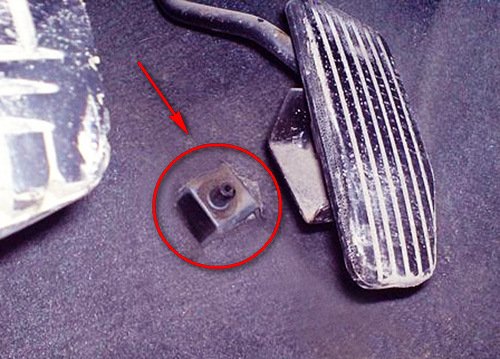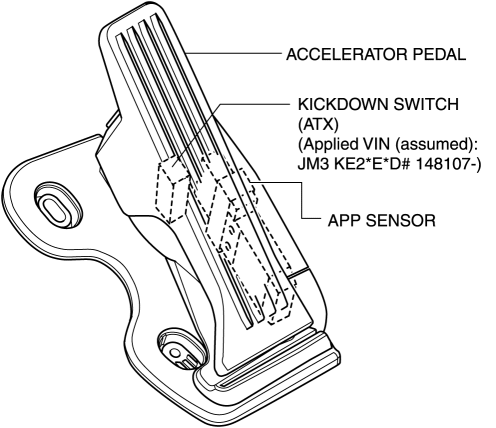What is a Kick-down Mode in Automatic Transmissions: Functions and Principle of Operation
When driving a car equipped with the automatic transmission one may wonder what is a kick-down and how it should be used. This is particularly true for novice drivers or experienced drivers, who only recently moved from manual to automatic transmission. Let’s provide insight into this helpful operation mode.
What is a kick-down?
Kick-down is the mode of operation which provides the maximum possible acceleration in the car equipped with the automatic transmission. It is important to point out that the kick-down mode is available only in automatic transmissions when the driver pushes the car's accelerator (gas pedal) to the floor. This action forces the automatic transmission to downshift for faster acceleration. Frequently, drivers confuse this mode with the “overdrive” function, which significantly differs from the kick-down. It has been argued that the kick-down mode can be implemented in CVTs. Unfortunately, this mode is not provided for CVTs. CVTs have a sport-mode, but it differs from the kick-down. The same applies to manual transmissions, because the design of manual transmissions does not imply this mode.

That’s how the kick-down button looks like
Usage of kick-down mode
The kick-down mode can be engaged only at
reduced engine RPM. Commonly, the kick-down mode should be activated when the top
gear is engaged; otherwise the process of acceleration won’t be intensive
enough. The kick-down button is located under the gas pedal. It is necessary to
press the gas pedal to the floor to activate the kick-down mode. The transmission
will switch to the normal mode of operation as soon as the driver takes his
foot off the gas pedal.
Principle of operation
As it has been mentioned above, the kick-down shift knob is located under the gas pedal in cars equipped with automatic transmissions. When the knob is pressed, it transmits a signal to the ECU that the car requires an urgent acceleration. The ECU, in turn, is responsible for downshifting and helping the engine to achieve optimal RPM for the maximum acceleration.

A current is applied to the kick-down solenoid,
when the automatic transmission switches to the kick-down mode. Then the
kick-down valve opens and pressure applies to 1-2 and 3-4 gears. When the gas pedal
is depressed, the solenoid gets cut from current, but the valve stays open. When
the RPM value grows, the valve closes under the pressure.
Can kick-down be harmful
for your car?
Manufacturers of automatic transmissions claim that the kick-down mode should be used at least once a day to prevent sticking of the kick-down valve. But according to many auto mechanics, frequent usage of this mode may lead to wear of engine and transmission components because of overloads. Therefore, many owners of cars equipped with automatic transmissions with the kick-down option raise a logical question – can usage of this mode be harmful for the transmission, since automatic transmissions are very vulnerable to the aggressive driving style? So it is, automatic transmissions are mainly designed for smooth motion, but car makers install automatic transmissions on sport cars which by definition are intended for high speeds. Where is the logic here?
The thing is that the kick-down is a mode provided and most importantly approved by car manufacturers, so drivers can use this mode without any fear. It is very unlikely that car manufacturers will implement features in their cars which may be potentially dangerous for the car service life. Moreover, when the driver pushes the gas pedal to the floor, he activates many systems which monitor the driver’s actions and how the powertrain operates. This system is so smart that, on the one hand, it allows the driver to perform sharp accelerations, and on the other hand, it takes into account numerous parameters (speed, RPM, engaged gear, position of the throttle valve, etc.), and engages the gear which is permissible at the given speed and RPM. To put it shortly, the automatic transmission will never downshift to the 1-st gear when the 5-th gear is engaged, no matter how hard the driver pushes the gas pedal. All driver’s actions and car operations are controlled by the ECU. It follows that the kick-down mode can be considered safe for cars with automatic transmissions. Operational tests prove that usage of the kick-down mode is absolutely safe. Vehicle failures, in most cases, are caused by poor quality of oil or fuel and ill-timed maintenance.
But there are several
exceptions…
Old cars equipped with automatic transmissions indeed
may suffer from frequent and sharp accelerations. Old transmissions have a
number of drawbacks in comparison with modern transmission solutions and
frequent overloads may cause significant damages to the car equipped with the
old automatic transmission. The kick-down mode is implemented in old automatic transmissions
with the help of a special kick-down cable, which also can be damaged or get
out of adjustment, therefore it’s better not to get carried away with the
kick-down in old cars, otherwise it can lead to costly repair.

Kick-down cable
It is also not recommended to use the kick-down
mode when there are some other issues with the car or its transmission. It is
very risky to use the kick-down in the car with technical malfunctions. In this
case, it is better to avoid sharp accelerations and to consult repair
specialists.
Finally, driver should not go too far with the kick-down mode and use it too often. It should be understood that even if the kick-down is provided and approved by the car manufacturer, sharp accelerations give increased loads on all mechanisms of the automatic transmission and sooner or later it may lead to the transmission failure. Moreover, each case of sharp acceleration causes increased fuel consumption. Therefore, it is better to drive safely and to use the kick-down mode reasonably.








